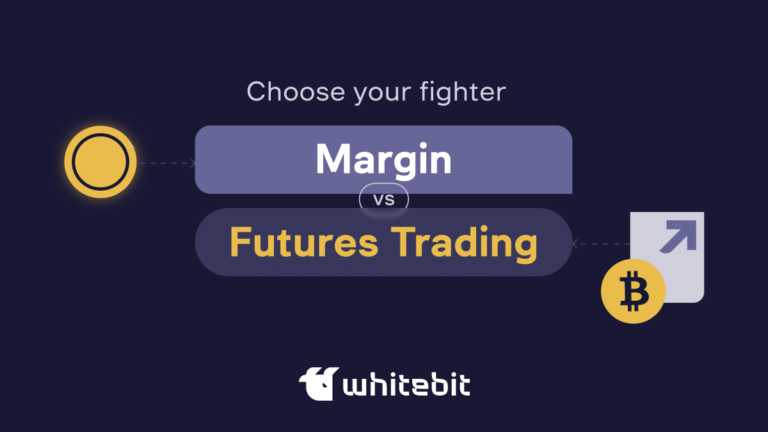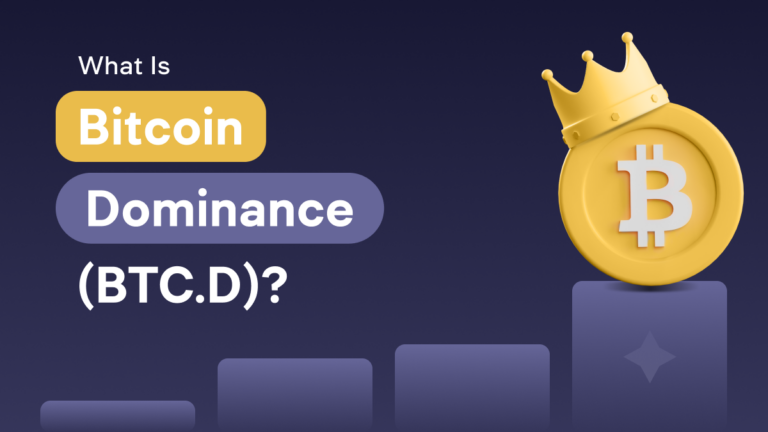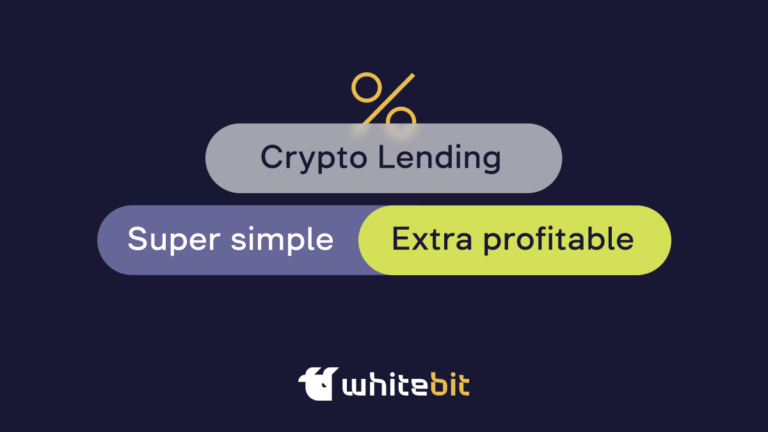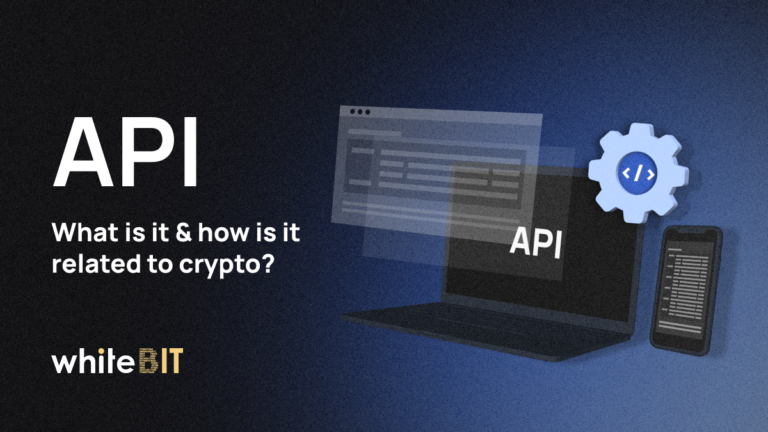What Are Crypto Futures, and How Do They Work?
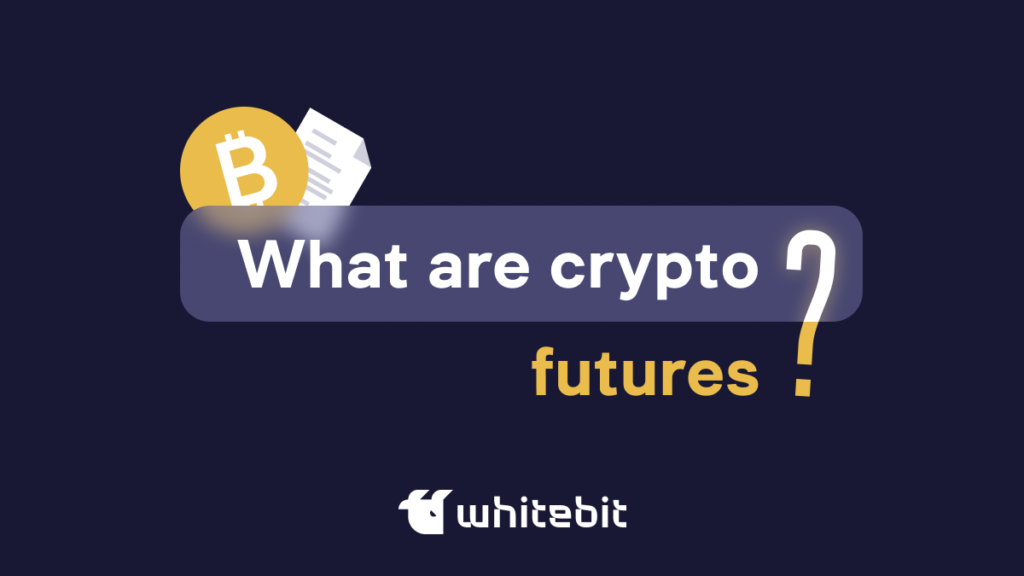
Content
A cryptocurrency futures contract is one of today’s most popular digital trading tools. This type of agreement between investors has been known to the world for a long time, but how does it work in cryptocurrency? If you are interested in crypto futures trading, the following information will be helpful for you to better understand how this tool works.
In this article, we will analyze the historical development of cryptocurrency futures, what kinds of contracts are, how to trade them, and how to deal with specific agreements. For example, how to invest in Bitcoin futures. In addition, you will find a complete guide and popular strategies for making crypto futures work for beginners and seasoned traders. Find crypto futures explained in the blocks below.
What is crypto futures trading?
What is futures trading crypto? Futures contracts or futures are derivative financial instruments, contracts to buy or sell an asset at a predetermined time and price. As with margin trading, stocks, commodities, and cryptocurrencies can act as assets. At the expiration date, the parties must fulfill their obligations regardless of the market price of the purchase at that moment.
Unlike spot and margin trading, when trading futures, a person, not being a direct holder of an asset, can open long or short positions. If you have a futures contract, you don’t need to own an asset to speculate on its price. By trading derivative financial instruments, you can secure yourself if the price of an asset falls and protect your portfolio from high market volatility.
Each contract contains the following information:
- Name, ticker, size, and contract type;
- Expiration date (not applicable to perpetual contracts);
- The underlying asset determines the value;
- Leverage;
- Settlement currency.
History of futures contracts
According to some reports, the first futures exchange was based on the rice trade back in the Middle Ages in the ancient capital of Japan, Osaka. Futures contracts, as we know them, came much later. In the middle of the nineteenth century, Chicago experienced a real trading boom. The city became the commercial center of the Midwest in the 1840s. Its location and well-established infrastructure (railway and telegraph) attracted business people of various levels to that area. During that period, the inventor Cyrus McCormick, having completed his father’s development, presented a new tool that significantly influenced the work of agriculture. It was a grain grinder that markedly increased farm productivity.
Farmers from all over the Midwest came to Chicago to sell their grain to dealers. There were no established procedures for determining a product’s price or weight. Often, it all depended on the dealer. In addition, farmers who brought goods might find that there was a too big proposition in Chicago. Supply far exceeded demand, which affected the price of the goods. Buyers, in turn, faced the problem of transporting grain, especially during the cold seasons of the year.
It is what started futures trading in the United States. These difficulties prompted farmers and merchants to conclude contracts with a delay in the delivery of goods. The scheme may be as follows: a farmer sells grain to a merchant in late autumn or early winter. He aims to store the goods until it becomes possible to transport them, for example, by a river. Farmers experienced the risk of falling prices in winter every year and had to consider it. The traders who bought the grain traveled to Chicago to protect themselves from this. They entered into contracts with processors there for grain supply in the spring. Thus, they guaranteed themselves both buyers and an acceptable price for grain.
Futures contracts have gradually become widespread due to their undeniable advantages. The buyer of a futures contract could change his mind about buying grain and resell this right to an interested person. A farmer who could not or did not want to turn in the agreed amount of grain on time could sell this obligation to another farmer. In case of bad weather, buyers of futures contracts benefited by buying grain at a much lower price than it was worth after the crop failure. On the contrary, if overproduction and the price fell, the futures contract could no longer be such a profitable business.
Over time, speculators became interested in futures. They did not really need grain. Such players pursued only one goal. It is to buy low and sell high. This trading model is familiar to us today in the crypto environment.
Initially, people traded only grain crops (corn, wheat, oats, etc.) on the exchange, but later they extended futures contracts for other goods and services. In 1960, futures trading began on the Chicago Mercantile Exchange (CME)*, which competes with the Chicago Board of Trade (CBOT)** livestock and frozen pork. In 1982, fully electronic gold and silver futures contracts were introduced on the CBOT. Then, in 1982, futures appeared on the United States best-known stock index, the S&P 500***.
In 1999, CME introduced weather futures for the first time. They make it possible to reduce price risks in the country’s agriculture and energy sector. Weather futures are standardized exchange contracts traded on the CME since 1997. The underlying asset of weather futures is atmospheric pressure, temperature, wind speed, and air humidity.
* Chicago Mercantile Exchange (CME) is one of the largest and oldest exchanges in the world, which trades derivatives for currencies, agricultural products, metals, fuels, and more.
** The Chicago Board of Trade (CBOT) is the longest-standing futures exchange specializing in agricultural commodities.
*** S&P 500 Index is an abbreviation for the American Standard & Poor’s 500 Index, which includes the largest US companies by capitalization listed on the NYSE and NASDAQ stock exchanges.
How do crypto futures work?
Traditional futures appeared almost a century ago, but cryptocurrency futures trading became available only recently, at the end of 2017. Where to trade Bitcoin crypto futures? Cryptocurrency futures trading is available on derivatives trading platforms or crypto exchanges. How do Bitcoin futures work? Read on and find answers to your questions.
The CME exchange was able to obtain regulatory approval and certification from the U.S. Securities and Exchange Commission (SEC) to provide services for trading digital assets, namely, trading Bitcoin futures. This tool allowed institutional investors and clients of the CME exchange to open positions for a fall, which subsequently led to a protracted bear market.
Only a couple of years later, we found out the true reason for the launch of the BTC derivatives. Former head of the Commodity Futures Trading Commission (CFTC) Christopher Giancarlo admitted that the launch of Bitcoin futures helped burst its bubble in 2017.
So, how do cryptocurrency futures work? As mentioned above, a futures contract allows you to speculate on the price of an asset without owning it. In theory, this should be a less risky and, accordingly, more profitable trade. However, crypto futures have their own rules, which can actually be not so easy to play. There are certain methods and strategies for successful interaction with such contracts. Basic futures trading depends on its type. We will discuss these types and how to deal with them in the next block.
Types of cryptocurrency futures contracts
Depending on the nature of the obligations, futures are divided into the following types:
- Deliverable futures involve the purchase or sale of an underlying asset that can be delivered, for example, raw materials, precious metals;
- A settled future is a contract for underlying assets that cannot be delivered or shipped, such as indices.
But in the cryptocurrency world, there are standard and perpetual futures. Discover crypto futures trading explained in this block.
Standard crypto futures contracts
Standard are the ones with a set execution date. They divided into two groups:
The first groupimplies the delivery of goods at a specified time and a fixed price. This contract is focused on the delivery date with a price fixation. If the seller doesn’t provide the goods to the buyer at the expiration date, the exchange should pose a “fine” to the seller.
Case 1: A trader bought a futures contract for 200 shares of company X. The share price is $100 per share on the expiration date. On the execution day, the futures are debited from the trader’s account, and 200 shares of $100 each are credited.
The second group implies a simple settlement without the delivery of the underlying asset. In this case, the exchange or a broker will simply calculate the difference between the contract’s purchase price and its strike price at the expiration date.
Case 2: A trader bought a futures contract for 1 BTC at $10 000 for one month. A month later, the asset’s price rose to $12 000. When the agreement is executed, he will receive a benefit of $2000. If the price drops to $8000 monthly, the trader will lose $2000.
Perpetual crypto futures contracts
What are perpetual futures crypto? Perpetual futures are the same as classic futures but without an expiration date. People can trade such contracts constantly. Profit in perpetual trading contracts consists of payments based on the funding rate, depending on the asset’s price at the time of its calculation.
Funding rate (funding) is periodic payments to traders with short and long positions based on the difference between the asset’s price in the contract and the asset’s price on the spot market. It is calculated every 8 hours for all open positions.
The financing mechanism allows traders to earn and keep the underlying asset price in the contract close to the market price. When cryptocurrency prices rise, users with short positions pay users with long positions. When prices fall, the payments are made vice versa.
For example, you assume that the price of BTC will fall and open a short position to sell 1 BTC. And the other trader thinks that the asset’s price will grow and sets a long position to buy. Every 8 hours, the exchange will calculate the difference between the contract’s strike price and the asset’s spot price. Traders with open positions will receive or make payouts based on their positions and the asset’s price.
Leverage
Leverage is another essential element of futures trading. For example, if you want to buy Bitcoin on the spot, you must pay the full fair value for one asset. But in the futures market, you will get the same thing by paying only a fraction of the coin’s market value.
Leverage is a magnet for traders in the futures market. It allows for using capital with maximum efficiency. The futures contract will allow you to open a Bitcoin futures position by paying only a fraction of the cost. The more leverage, the less money you need to invest in a position.
Margin
An initial margin is required to enter a position in the market. It means that opening another position will need an appropriate margin. In turn, the maintenance margin is the minimum amount necessary for an investor to maintain an open trading position.
The maintenance margin is constantly monitored, which helps to keep track of the use of collateral. If a trader reaches the maintenance margin limit, his position will be liquidated.
Cryptocurrency futures and options: what is the difference?
Options and futures are helpful tools for crypto traders spreading their usage daily. The combined volume of options trading on Bitcoin and Ethereum reached approximately $387 billion in 2021. See the Bitcoin futures explained below.
Both of them are derivatives. It means that their value is derived from the price of underlying assets such as stocks, commodities, or cryptocurrencies. Neither options nor futures confer ownership of an asset.
Options give its owner the right, but not the obligation, to buy or sell cryptocurrency at a predetermined price before a specific date. You must pay some sum when you purchase the contract to get the guarantee. Futures oblige the owner to buy or sell cryptocurrency at a pre-agreed price after the contract expires without requiring additional payment.
Of these two types of contracts, options are considered safer. The very name of this tool says that it offers an “option” to buy or sell but does not bind the trader with an obligation.
How to invest in Bitcoin futures
What are Bitcoin futures, and when did Bitcoin futures start? The BTC coin futures offer protection against volatility and adverse price movements. They also allow traders to speculate on the BTC future price. You can enter long Bitcoin positions if you expect the price to rise. In contrast, go short to cut losses when bitcoin prices fall. During periods of market instability, you can hedge your BTC portfolio by opening a reverse position for the same amount of BTC using futures contracts. In this case, Bitcoin futures contracts can protect your funds.
There are opinions that BTC futures contribute to the mass adoption and popularization of cryptocurrencies. Their appearance can stimulate demand and positively influence the price and market capitalization in the long term perspective.
How to trade crypto futures
You should prepare thoroughly for futures trading. At a minimum, you should clearly understand how cryptocurrency contracts and margin trading work. Take risks consciously and rely on your knowledge, not luck.
Choose a trading strategy
Develop your crypto futures trading strategy individually according to your personality traits, lifestyle, risk tolerance, and long-term goals. Determine what type of trader you are, your risk tolerance, and your financial aims. Also, imagine trading options that match your personality type. Evaluate the effectiveness of each parameter and how you deal with them.
Make a plan
A clear understanding of your actions will help manage risk. When developing a plan, it is necessary to describe in detail the entry and exit of positions, including entry and exit indicators, position size, and the use of stop losses.
This way, you can reduce stress. It also will help you use more trading opportunities, teach you to follow trading habits, promote purposeful development and a serious attitude towards trading.
Risk management
Decide for yourself how much you are willing to lose. Don’t go all-in, but control your gains and losses. Make a table and find patterns in which you, for example, lose profits. A clear view of income and losses, the awareness of the possibility of one and the other, will help you maintain control over the situation and save your nerves.
Responsibility
Set realistic goals for yourself and never use the money you need to live. The main principle of cryptocurrency trading is the knowledge base, a clear understanding of the risks and expectations, and acting with a cold head.
Where to Trade Bitcoin Futures?
Today, the array of platforms and services offering the ability to trade Bitcoin futures contracts is more prominent than ever. And it continues to grow alongside the popularity of cryptocurrencies. Competition for clients on crypto platforms is increasing daily, so attractive offers in exchange for trading activity await around every corner.
For instance, the crypto exchange WhiteBIT makes trading futures much more straightforward than one might imagine. After a few clicks through the interface, you’re all set. Let’s take a look at how to trade bitcoin futures.
Guide to Trading Cryptocurrency Futures on WhiteBIT
It only takes a few steps:
- Navigate to the “Trading” section, located in the top menu of the exchange. Then select “Futures”.
- Open the tab and choose a trading pair. In this case, “Bitcoin-PERP”.
- Select the type of order (Limit, Market, Stop-Limit, Stop-Market, etc.) and the amount of the asset you want to buy/sell, remember to check the leverage.
- Click “Buy” or “Sell” depending on the desired direction of the deal.
- You can monitor the deal in the “Open Orders” section. You can also set Take-Profit (TP) and Stop-Loss (SL).
Advantages of crypto futures trading
Cryptocurrency futures provide an opportunity to profit from various crypto market movements, both an increase in the value of crypto assets and a fall. Crypto futures contracts allow for using leverage. Thus, the investor can pay only part of the asset’s value. Also, futures provide an opportunity to hedge your portfolio. Or in other words, it decreases the impact of short-term corrections in asset prices. To summarize, futures contracts have the following advantages:
- The ability to create contracts for any asset (cryptocurrency, gold, oil, etc.) and determine its price by yourself;
- Perpetual contracts are traded around the clock, providing more flexibility for traders;
- The minimum threshold for opening positions;
- Opportunity to earn due to using leverage;
- Portfolio diversification and hedging of open positions;
- Opportunity to make in both bear and bull market conditions.
The conditions for trading futures contracts may differ depending on the platform on which you do it. Therefore, you need to choose a trading platform that will offer you the most favorable trading environment.
Trading perpetual futures on WhiteBIT
On WhiteBIT, users can trade perpetual futures on the following trading pairs:
- BTC-PERP
- ETH-PERP
- ADA-PERP
- APE-PERP
- ETC-PERP
- SOL-PERP
- AVAX-PERP
- LTC-PERP
- MATIC-PERP
- DOT-PERP
- TRX-PERP
- DOGE-PERP
- XRP-PERP
- TIA-PERP
- ARKM-PERP
- UNI-PERP
- RNDR-PERP
- FIL-PERP
- PIXEL-PERP
- LINK-PERP
- GRT-PERP
- OP-PERP
- TRB-PERP
- ATOM-PERP
- BCH-PERP
- STRK-PERP
- ZET-PERP
- BLUR-PERP
- ARB-PERP
- APE-PERP
- MKR-PERP
- SNX-PERP
- JUP-PERP
- FET-PERP
- NEAR-PERP
- BLZ-PERP
- SUI-PERP
- AXS-PERP
- MANTA-PERP
- XMR-PERP
- APT-PERP
- EOS-PERP
- LOOM-PERP
What are USD M futures? M futures crypto (margined contracts) use Tether (USDT) and other stablecoins as collateral. The available trading contract is USDT-M, meaning that settlements are conducted in USDT.
When you see the inscription “2x, 5x, 10x leverage”, the number next to “x” indicates the ratio of your funds to borrowed funds. So, a 2x leverage means that you trade at a 1:2 ratio. In this case, the exchange provides a loan twice the original amount.
Case 3: You have 10 USDT and want to buy BTC. Let’s imagine that 1 BTC = 10,000 USDT. You can buy 0.001 BTC for 10 USDT. Let’s imagine you use 20x leverage and no longer have 10 USDT but 200 USDT. So, you can buy 0.02 BTC.
Benefits of futures trading on WhiteBIT:
- The fees are lower than on spot and margin trading, 0.035% for takers (those who reduce an exchange’s liquidity) and 0.01% for makers (those who provide the liquidity to an exchange);
- Adjustable leverage up to 100x;
- The minimum contract size is 5.05 USDT.
Risks of cryptocurrency futures
Crypto futures trading has both its pros and cons. Speaking of the risks that this tool implies:
- A trader must transfer the asset to the second party at the expiration date at a predetermined price;
- High volatility of cryptocurrencies can lead to the loss of a trader’s funds;
- The costs of securing positions can increase drastically due to using leverage.
The high volatility of the cryptocurrency markets can either play into the hands of a trader or ruin the whole game. There are no guarantees or accurate predictions of how the market will move. Leverage also does not give full confidence in success. Beginners can suffer big losses due to the use of leverage. Especially those traders who will not follow a proper risk control strategy will be hurt by this feature.
Cryptocurrency futures contracts are a powerful crypto trading tool that allows traders to speculate on future asset prices. It is both useful if in the right hands and dangerous if the trader takes action based on emotion and faith in luck. Today, many platforms allow you to trade futures contracts. Picking up a crypto space on your terms is now not so difficult. The main thing is to be aware of your financial goals, consider the risks, choose a trading strategy, and upgrade your knowledge on time. Understanding the basics of futures exchanges will help you make serious progress. Before trading futures, be sure to select or develop your strategy and conduct a thorough analysis of the market at the time of operations.
FAQ
Cryptocurrency futures are contracts that imply execution in the future when specified conditions are met. Thanks to them, traders get access to digital currencies without having to own a real asset.
As with margin trading, stocks, commodities, and cryptocurrencies can act as assets. At a certain time, the parties must fulfill their obligations, regardless of the market price of the purchase at that time.
Both crypto futures and options are derivatives. Their value is derived from the price of underlying assets such as stocks, commodities, or cryptocurrencies. Neither options nor futures confer ownership of an asset.
Options give its owner the right to buy or sell cryptocurrency at a predetermined price before a specific date. As for a futures contract, a trader must pay a pre-agreed price after the contract expires.
Perpetual futures contracts, as the name suggests, do not have an expiration date, so they can be holded indefinitely.
Standard futures contracts expire on a date agreed upon by the parties in advance and perform their function if the agreed conditions are met.
Thanks to the ability to trade with leverage, you can start with a small amount of capital. Futures trading involves paying only a part of the asset you are purchasing a contract.
Thus, by properly managing your finances and being aware of the risks, you can build up a lot of capital with little money at the beginning. Also, it is worth considering fees on platforms for crypto futures trading. In some cases, it can noticeably affect your income.
Like any type of crypto trading, cryptocurrency futures contracts involve certain risks. The high volatility of the cryptocurrency market can help or mess things up. There are no guarantees or accurate predictions of how the market will move.
Leverage also does not give complete confidence in success. Beginners can suffer significant losses due to its use. This feature will hurt those traders who will not follow a proper risk control strategy.

